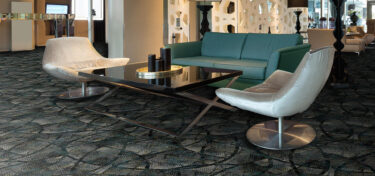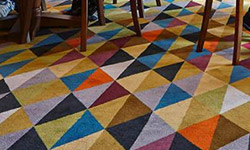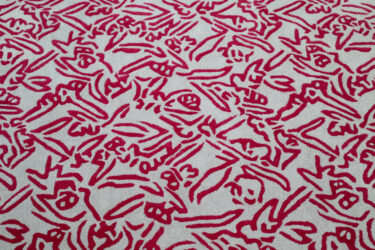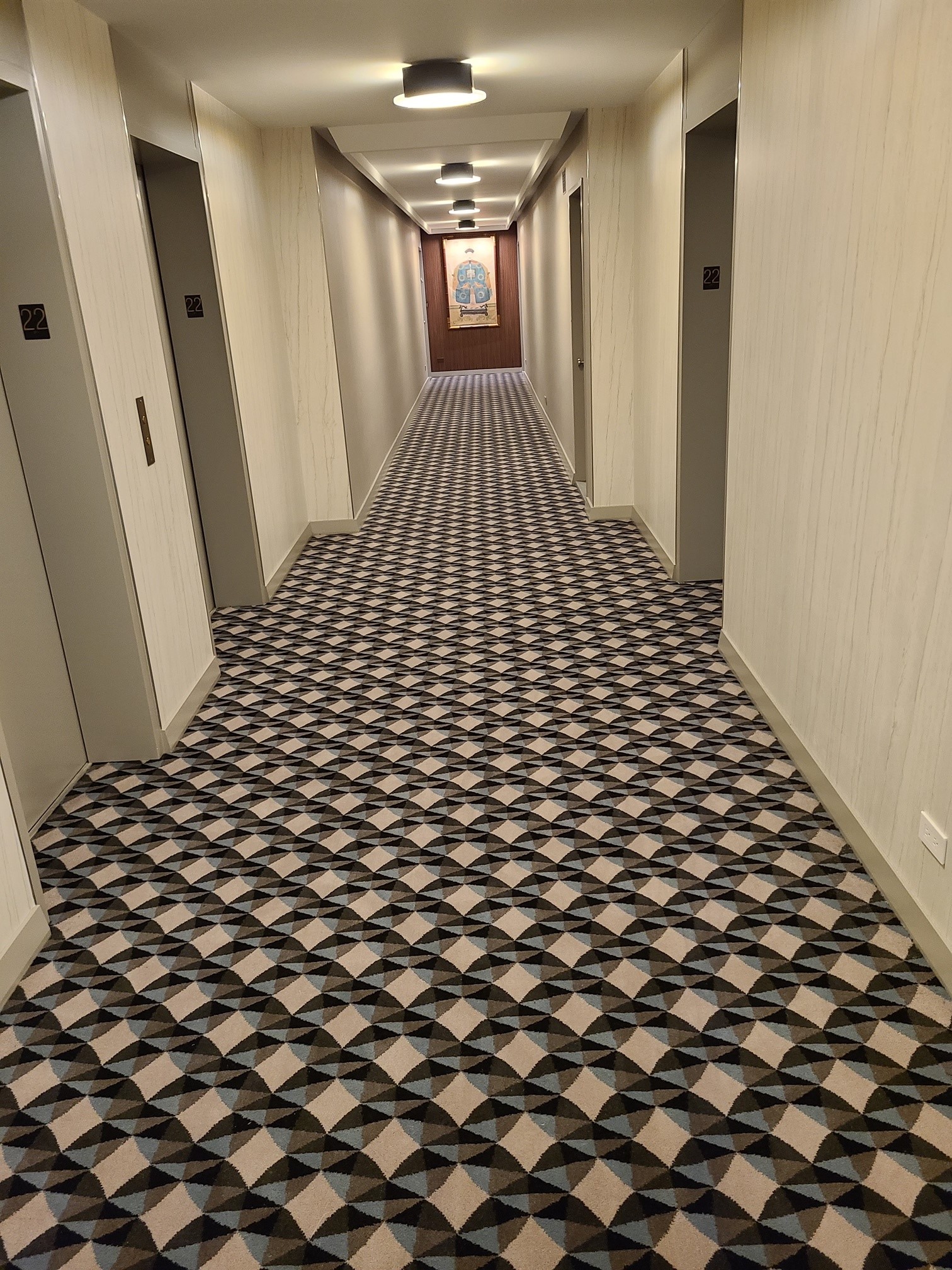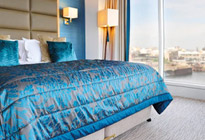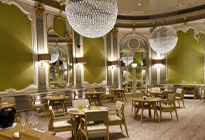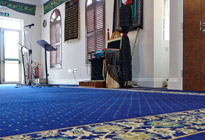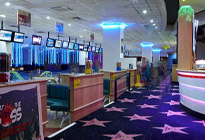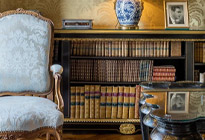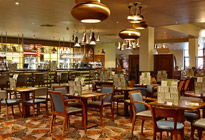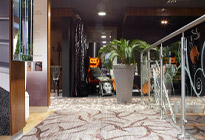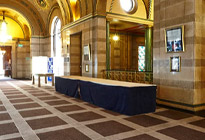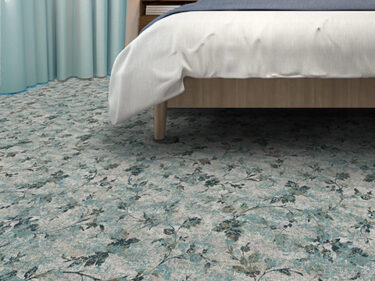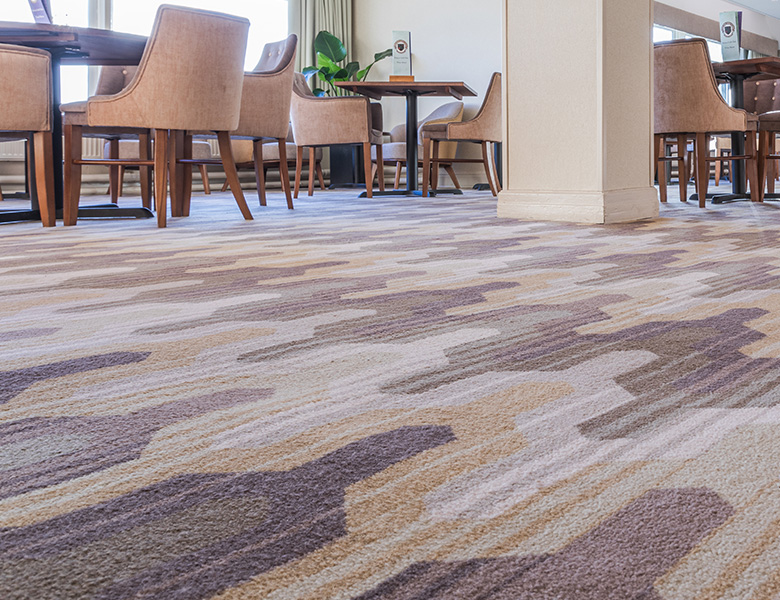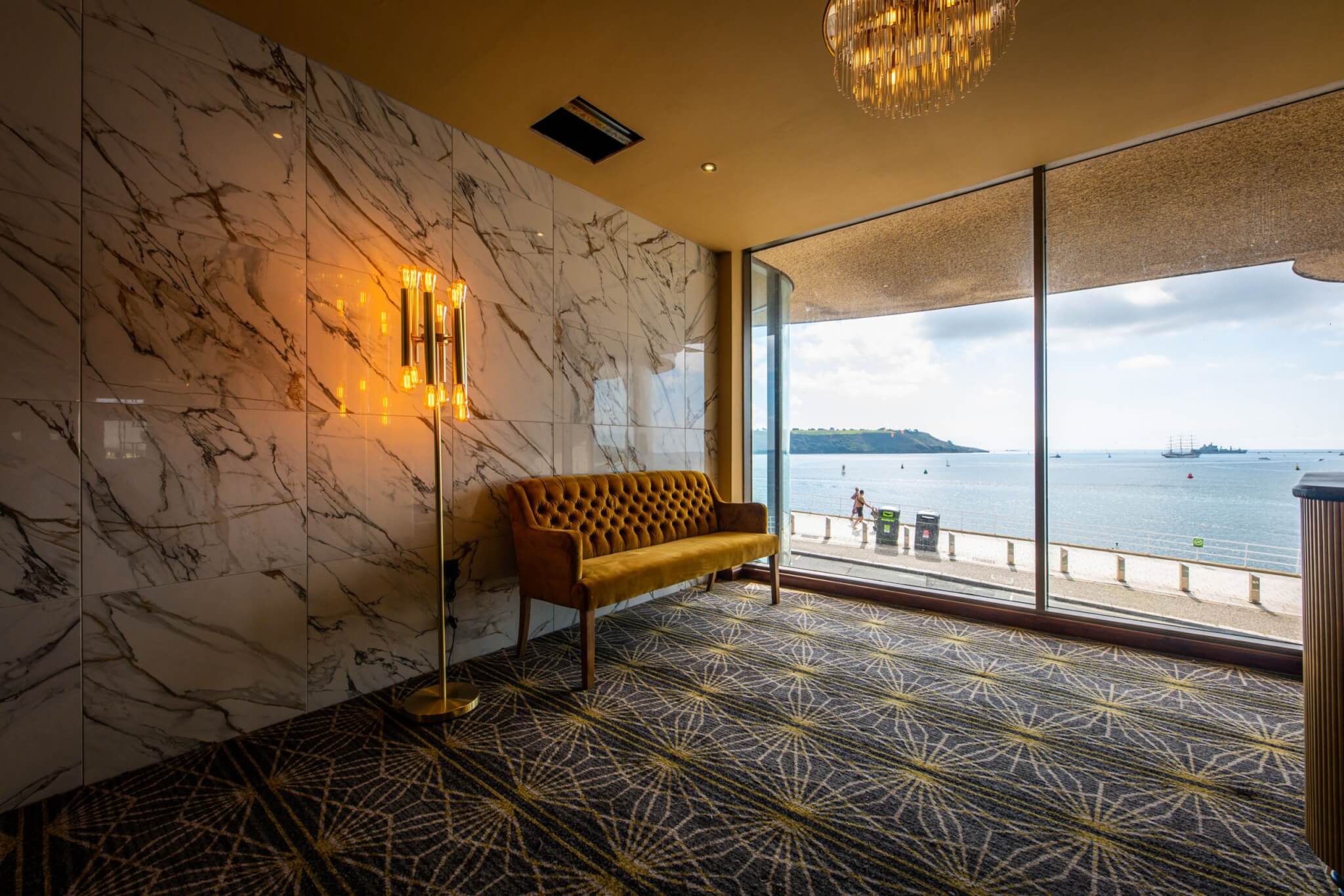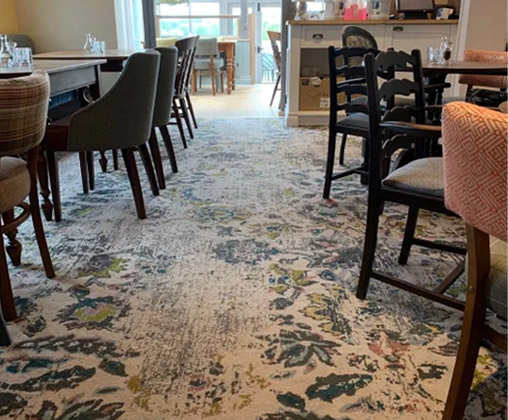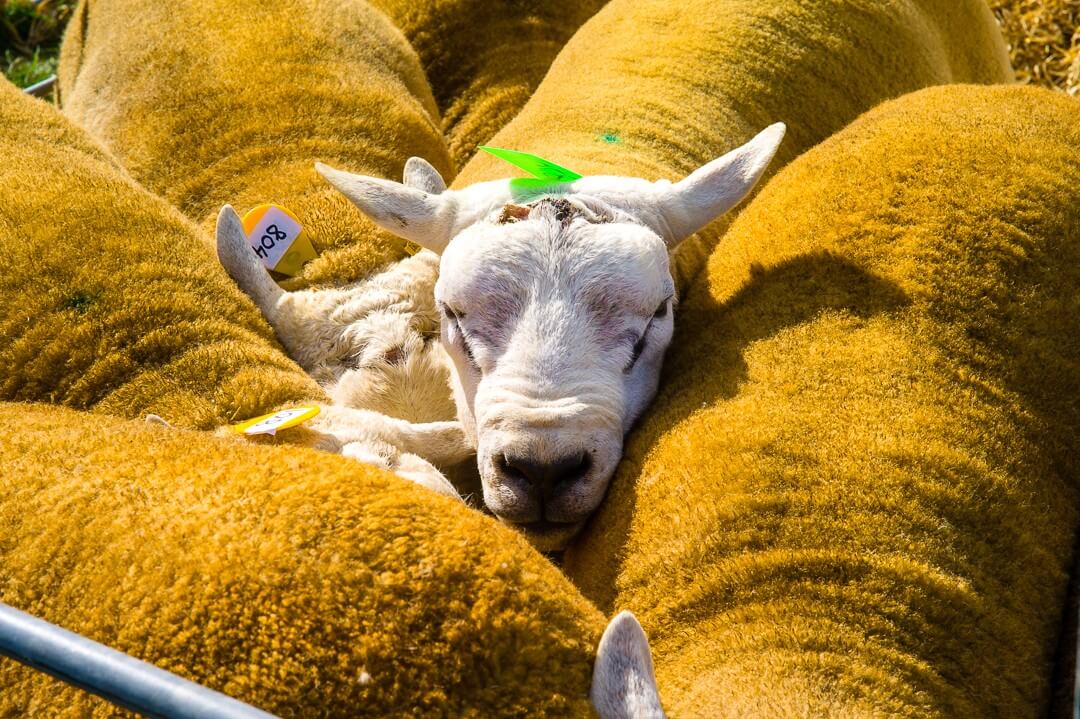
Why British Wool Makes Sense In British Carpet
- News
For those of you who didn’t know, most of the carpets made here at Wilton are wool-rich, crafted in Wiltshire using 80% wool. Of the wool used, around 80% comes from dedicated and hard-working sheep farmers across Britain. Wool carpet from Wilton really is a British affair and for good reason.
There are more than 60 breeds of British sheep – New Zealand has just four, despite producing more than five times the volume of wool – and thanks to our inclement weather, the wool these hardy British sheep produce is bulky and strong; ideal for use in our commercial carpet. British wool yields a carpet that is resilient to footfall with excellent recovery, yet this is just part of the story.
Wool is unquestionably 100% natural. Since the Stone Age, the fibre has been appreciated as one of the most effective forms of all-weather protection, not surprising given the climatic conditions sheep have found themselves in throughout the millennia. Science is simply yet to produce a fibre that matches it for all-round performance. The fleece is also 100% renewable for as long as there is grass to graze on. Each year sheep produce a new ‘harvestable crop’, bringing the true meaning of a renewable resource.
Wool production really is just a sustainable and sensible way to make carpet fibre; sheep graze peacefully without huge impact on their near or distant surroundings. Indeed, most wool growers work to safeguard their environment and make the industry attractive and sustainable for future generations. Equally, wool is 100% biodegradable and can be returned to the soil. In just a short time the fibre decomposes and releases nutrients into the ground, while in comparison, most synthetic fibres take an extremely long time to decompose and aren’t nearly as nutrient-rich.
There is no doubt that these ecological and environmental benefits hold huge sway and are reason enough for many to choose wool, but the fibre’s advantages extend to carpet performance too, impacting positively in many ways. As a hygroscopic fibre, wool responds to the surrounding air moisture, heating up during the absorption phase, making for a natural insulator. This property makes wool great at retaining heat; helping to reduce energy costs. The dense fibre also absorbs sound, wool carpets quietening footfall and reducing noise.
The crimped structure of wool resists tearing and each fibre can withstand being bent back upon itself over 20,000 times without breaking. This resilience gives wool its legendary reputation as the most lasting carpet fibre around. Due to these same crimps, wool is also naturally elastic, returning to its normal shape quickly to deliver maximum underfoot performance. This elasticity is another factor in helping wool to out-perform most man made fibres with reduced sagging and wrinkling, keeping wool carpets looking better in the long-run. British wool particularly has more bulk, again helping a carpet’s pile to perform well against wear in busy commercial spaces.
Yet perhaps most surprisingly and breaking common perception, the waxy coating on wool provides a natural stain-resistance. Thanks to its natural anti-static quality, it’s also easy to remove dirt and dust with regular vacuuming.
In places where flammability is critically important, such as those where the stringent Wheel Mark Certification applies, wool is often the only option as it can self-extinguish. Naturally flame retardant, the fibre has a far higher ignition threshold than others, it will not melt, nor stick to the skin causing burns and it produces less noxious fumes.
Finally, wool’s natural properties see a fibre that is hypoallergenic and anti-bacterial. In fact, it goes as far to make the air we breathe cleaner. A well-maintained wool carpet can even reduce floating dust in the atmosphere, with microscopic scales trapping particles till they can be vacuumed up.
With excellent dye take-up, British wool reproduces colour very well, giving tones that are rich and ideal for the nuances of pattern reproduction, giving excellent clarity of design. A low lustre also helps this, making sure wool carpets are among the best when it comes to pattern.
When it comes to an all-round package, here at Wilton Carpets, we’re pretty certain that British wool can’t be beaten and that’s why you’ll find it at the heart of carpets coming from our Wiltshire factory.
You can view the article here or you can download a copy here.
You can also view the other articles in this series:
Carpet Construction Dissected: Which is right for your hotel?
Selecting the Right Carpet for your Hotel
A huge thanks to the British Wool Marketing Board (BWMB) for its help in this article and if this has grabbed your attention, why not check out these other great wool-related articles and websites, they’re far from woolly:
The Campaign for Wool
British Wool Marketing Board (BWMB)
The Telegraph: British Wool: A thriving industry


